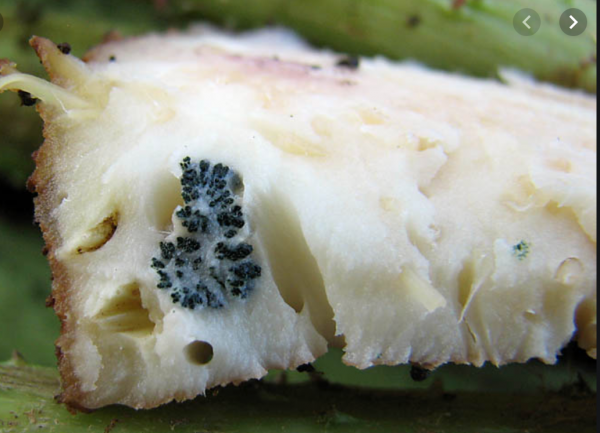Dr. Lew Feldman, Garden Director
A major theme of modern biology is the interconnectivity of life; that is, that no organism functions on its own, isolated from other life. Rather, all organisms, to one degree or another, depend on interactions with other species. In the Garden we have many examples of this interconnectivity, with one of the most striking examples being Gunnera tinctoria, also known as Chilean rhubarb, which is native to southern Chile and neighboring zones in Argentina, and which can be found in the South American section of the Botanical Garden. Its leaves can be upwards of 6 feet in diameter and when held upright, can grow to more than seven feet tall. Often the leaves are “armed” with spikes and spines, and hence look quite prehistoric.

In its native habitat Gunnera grows surprisingly well in often nutrient-poor, nitrogen-deficient soils. The ability of Gunnera to grow in such stressful soil environments depends on the interconnectivity between Gunnera and certain microbes known as cyanobacteria. This association, which is symbiotic, provides the Gunnera with an alternative source of nitrogen, based on the nitrogen-fixing ability of the microbes, thereby allowing Gunnera to grow in marginally-poor soils, such as riverbeds and coastal cliffs. In some areas, such as in New Zealand, this ability to populate poor soils has allowed Gunnera to become an invasive pest.
The ability of plants to establish symbiotic, nitrogen-fixing associations with microorganisms is not unusual in the plant kingdom. What is unusual about this association in Gunnera is that the nitrogen-fixing microbes reside in the petiole, at its base (pictured below), rather than in the roots, as is usual for most plant, nitrogen-fixing associations.

Cyanobacteria colonies in the base of the Gunnera leaf petiole.
It is also worth noting that when the soil in which the Gunnera is growing is rich in nitrogen (perhaps due to fertilizer applications), that a symbiotic association with cyanobacteria is not favored.
